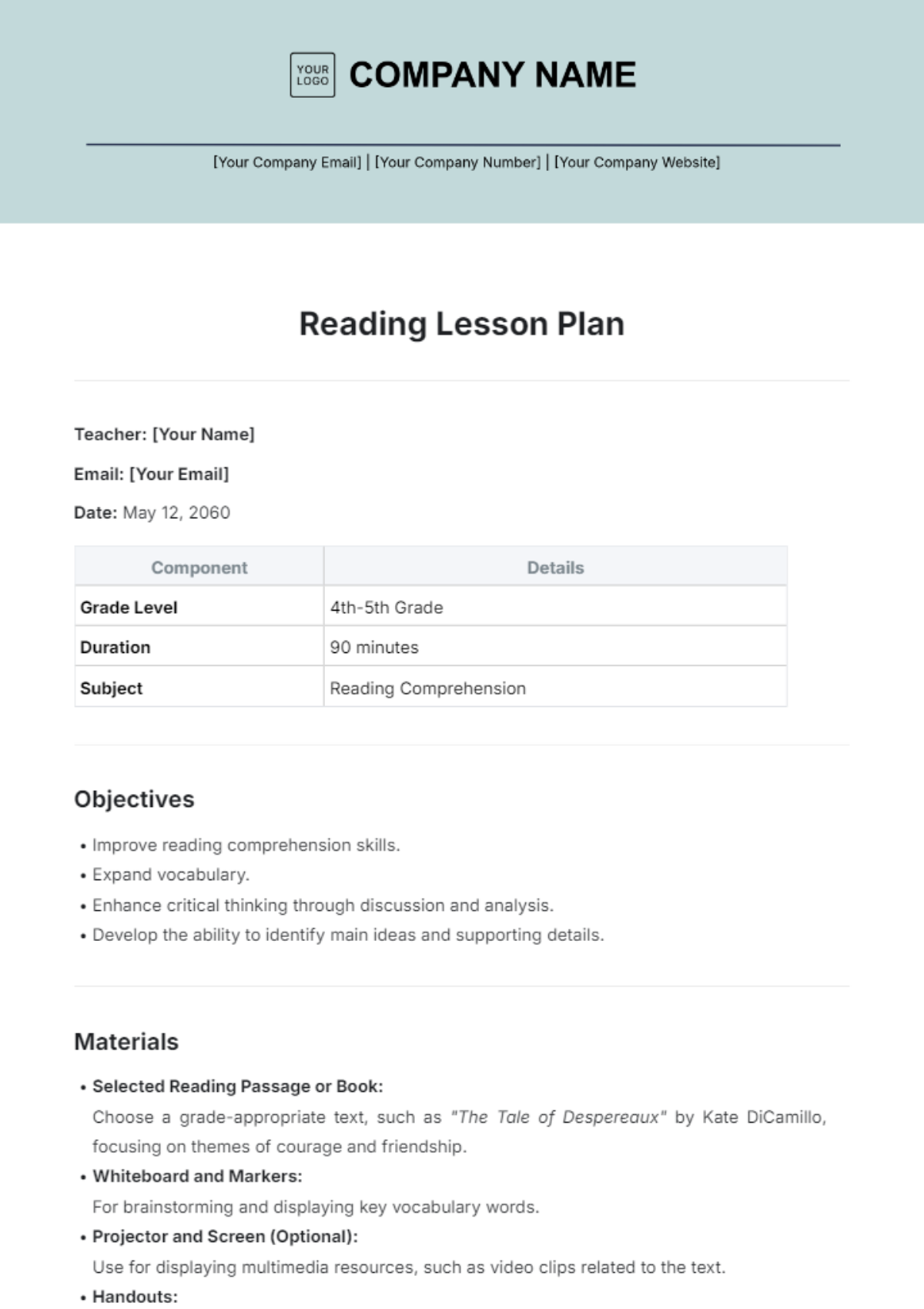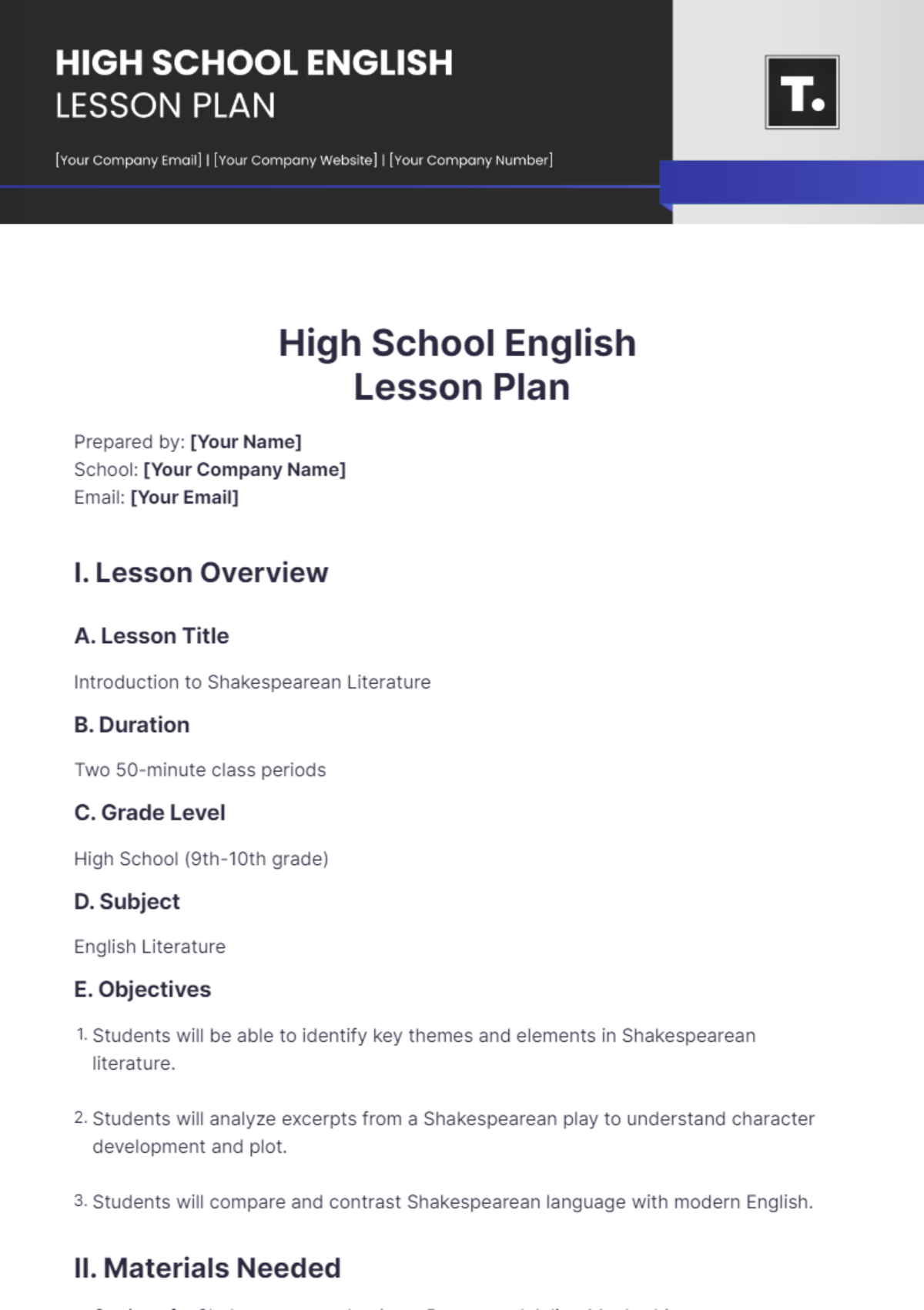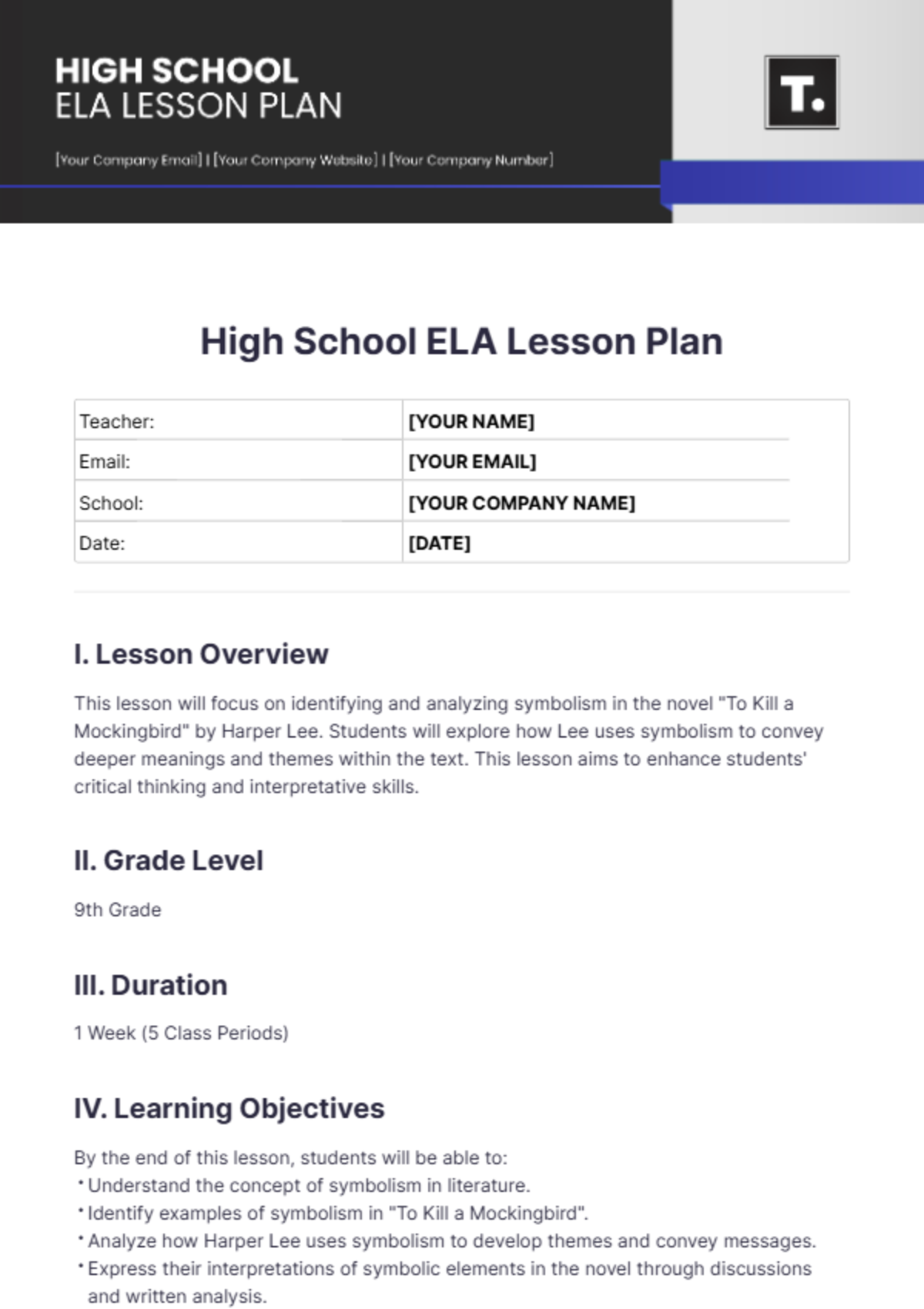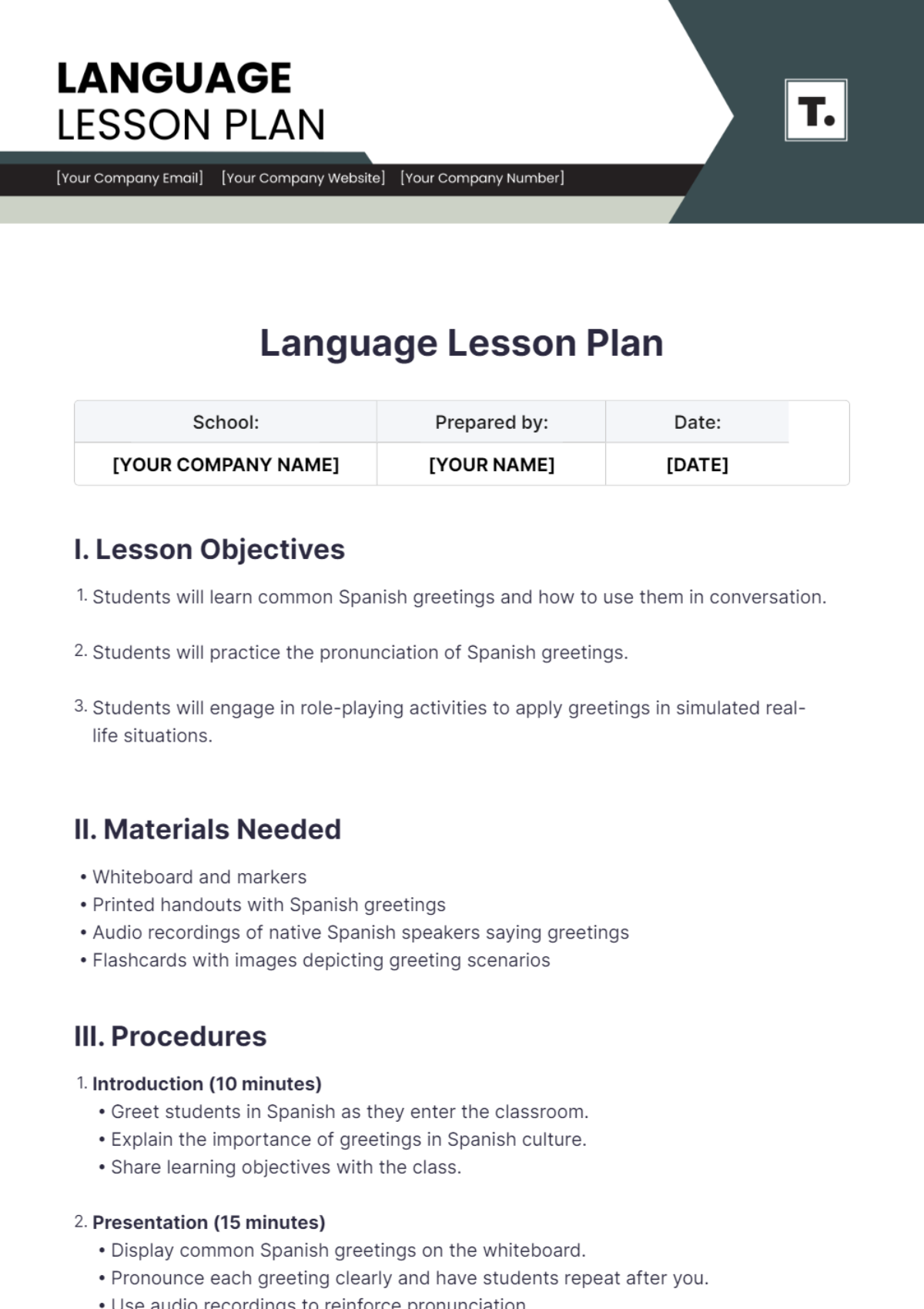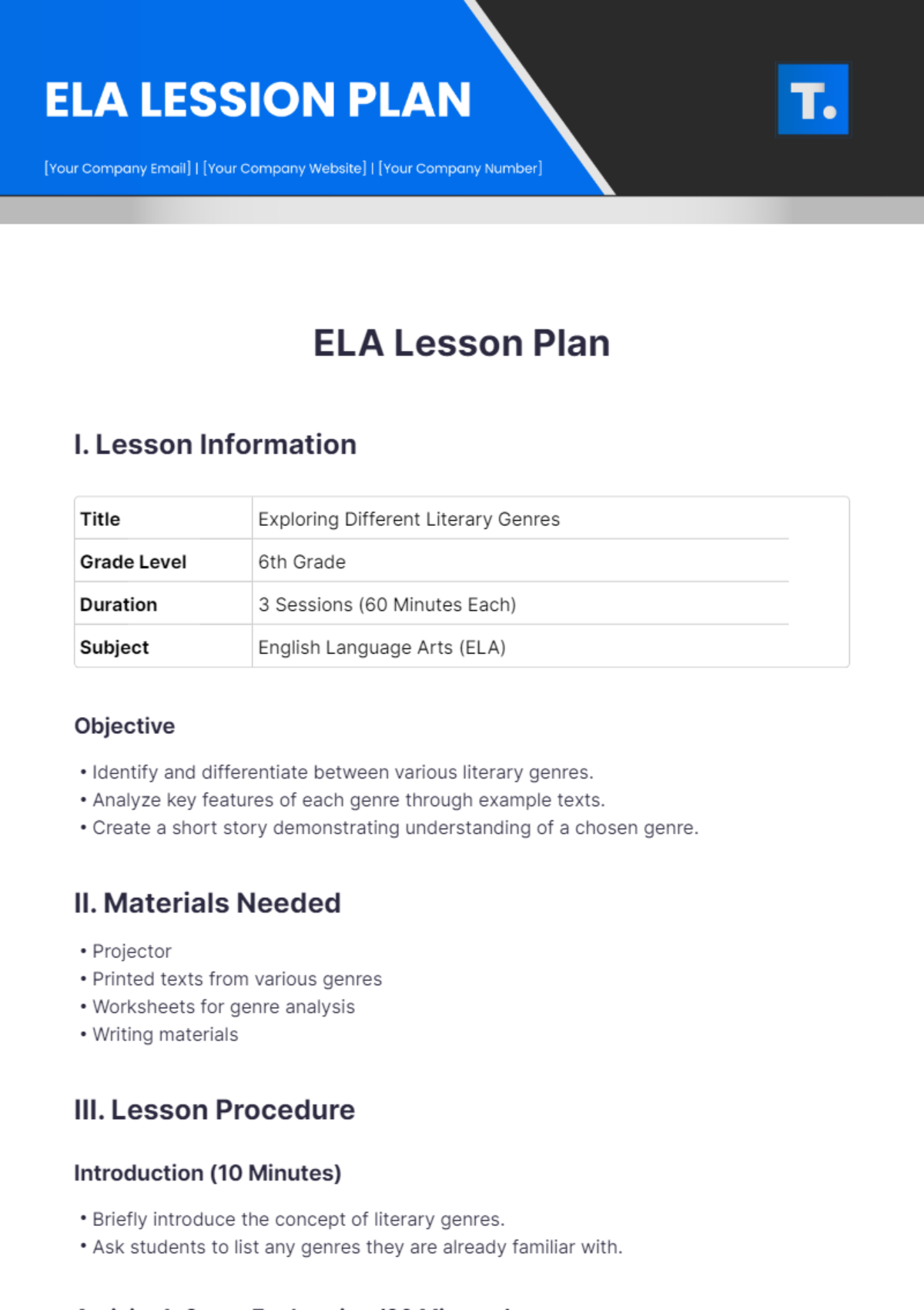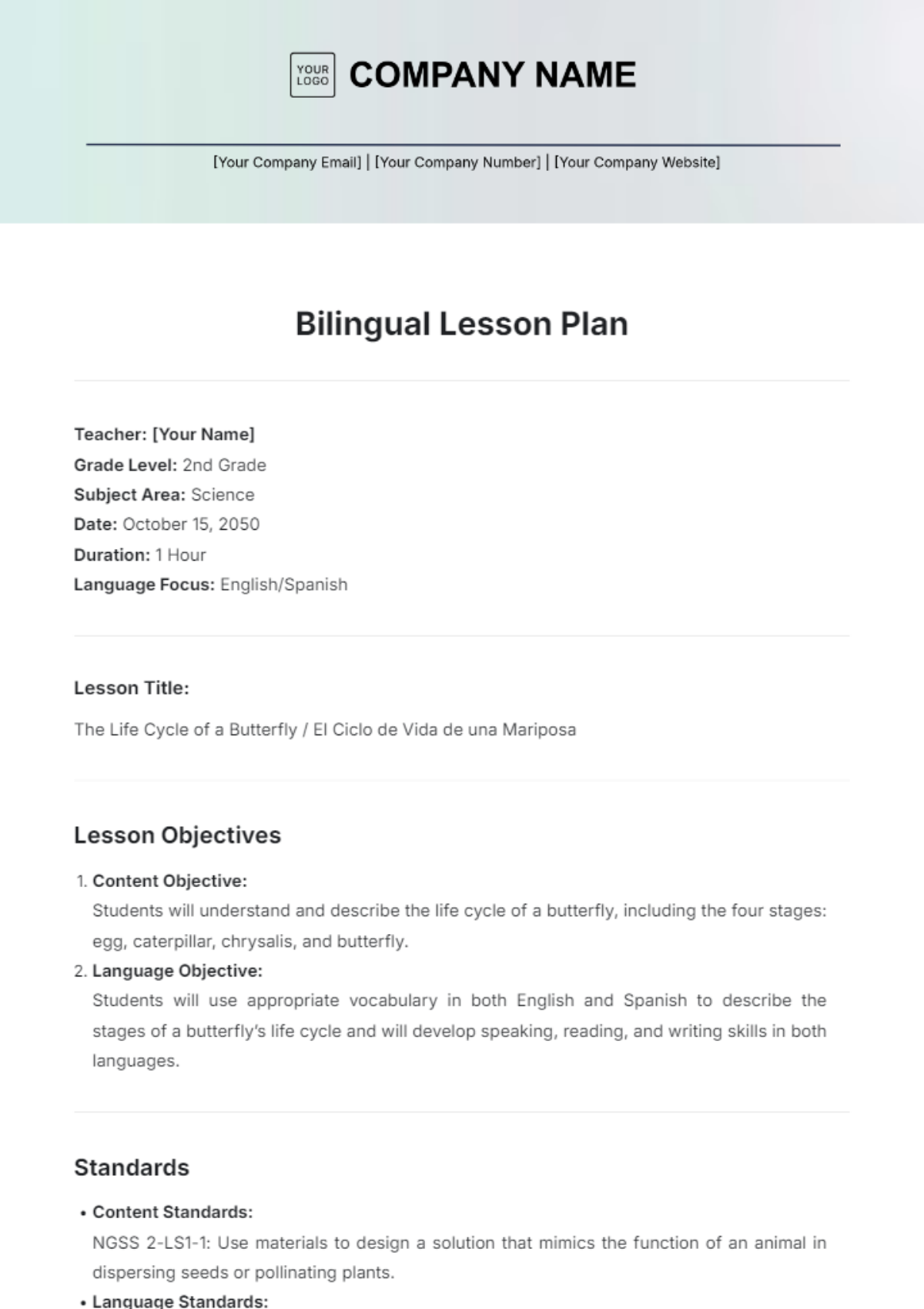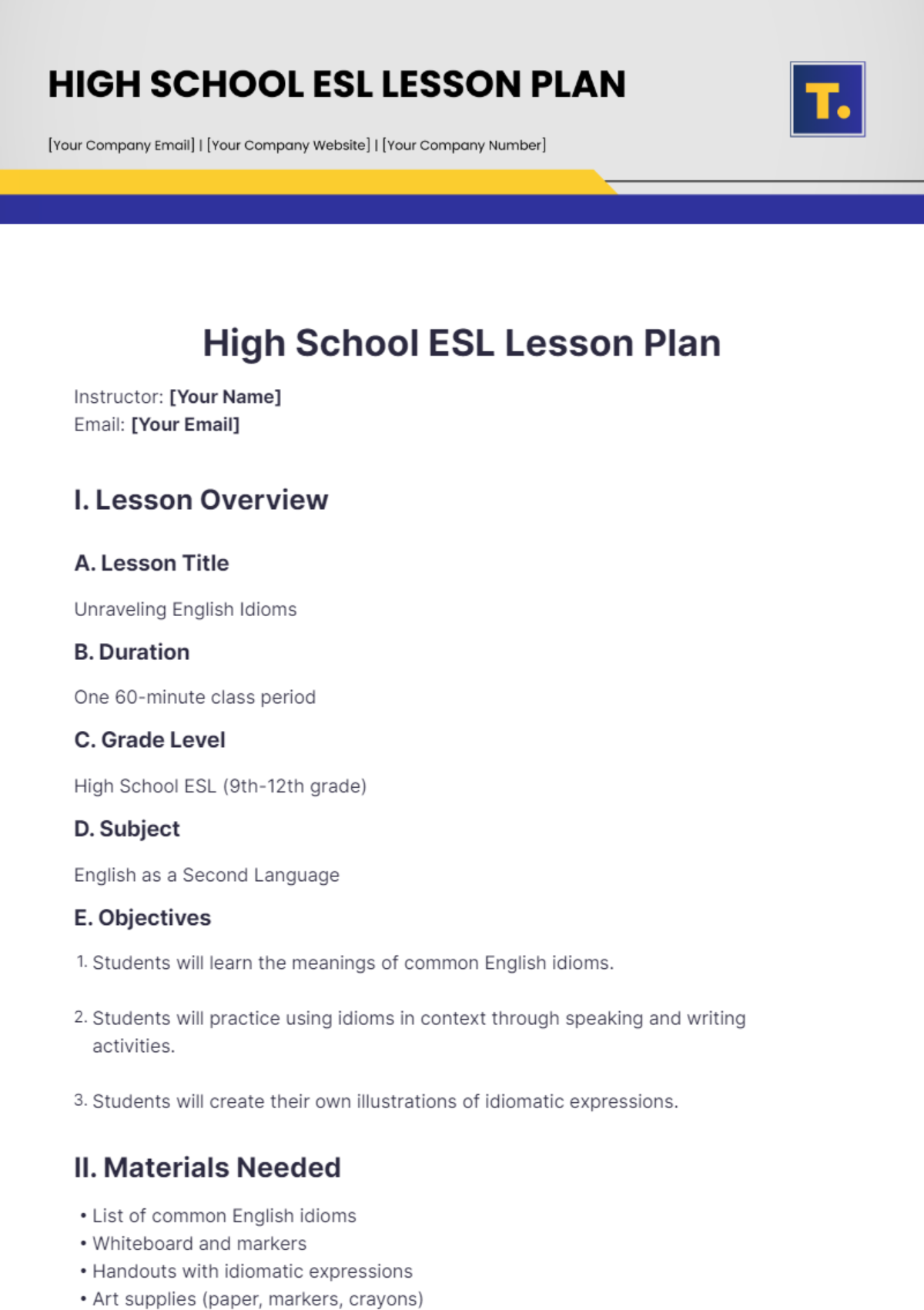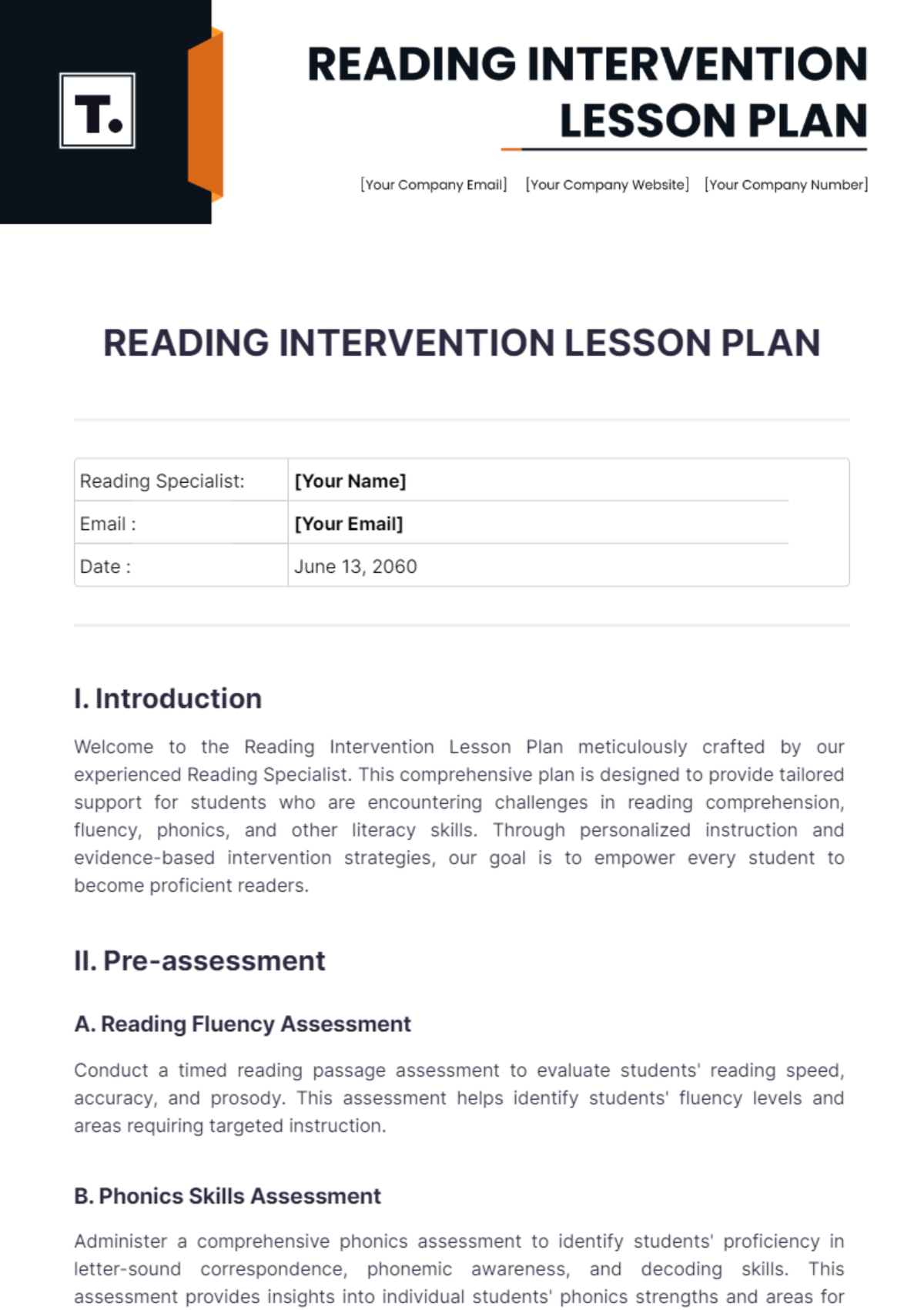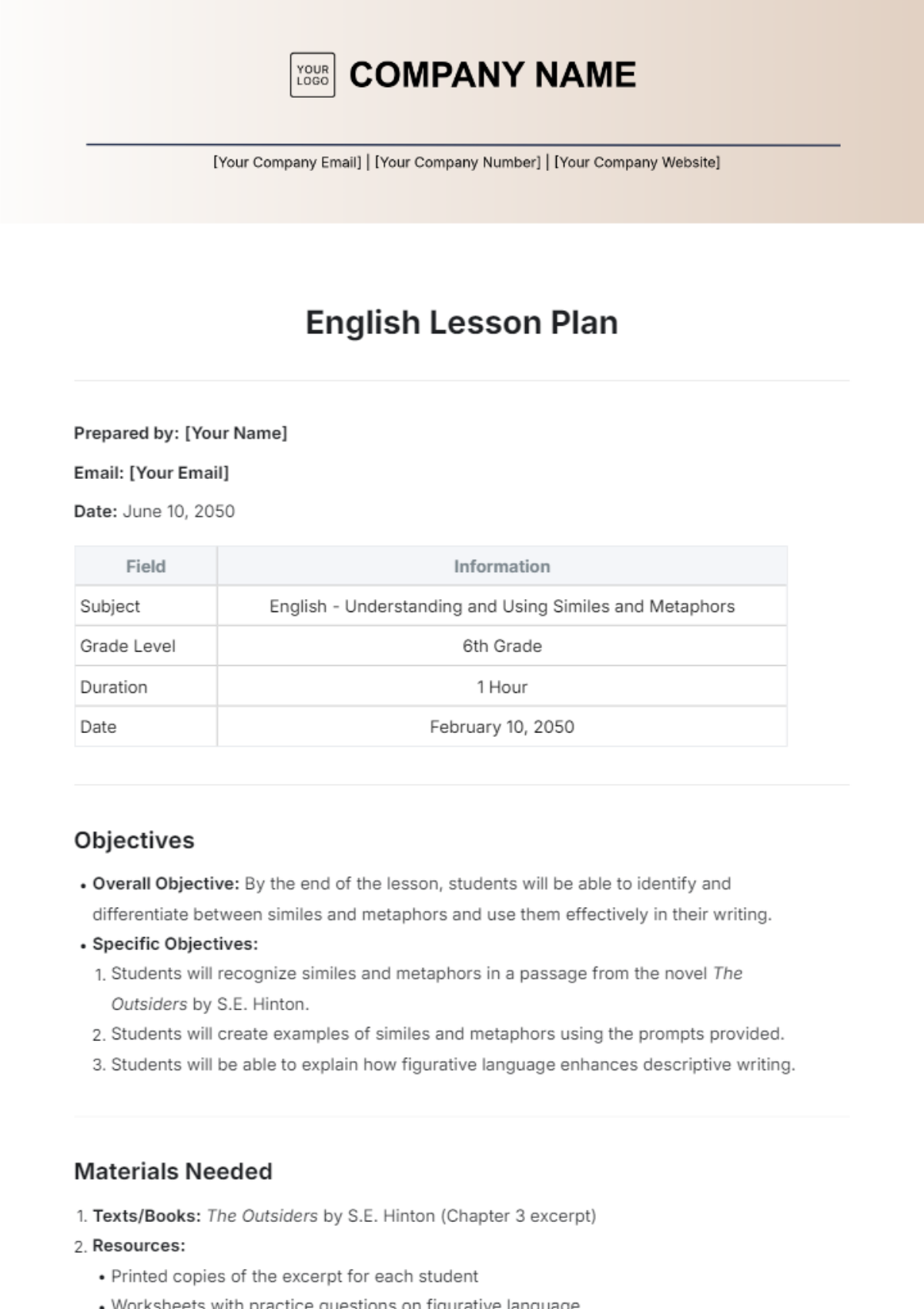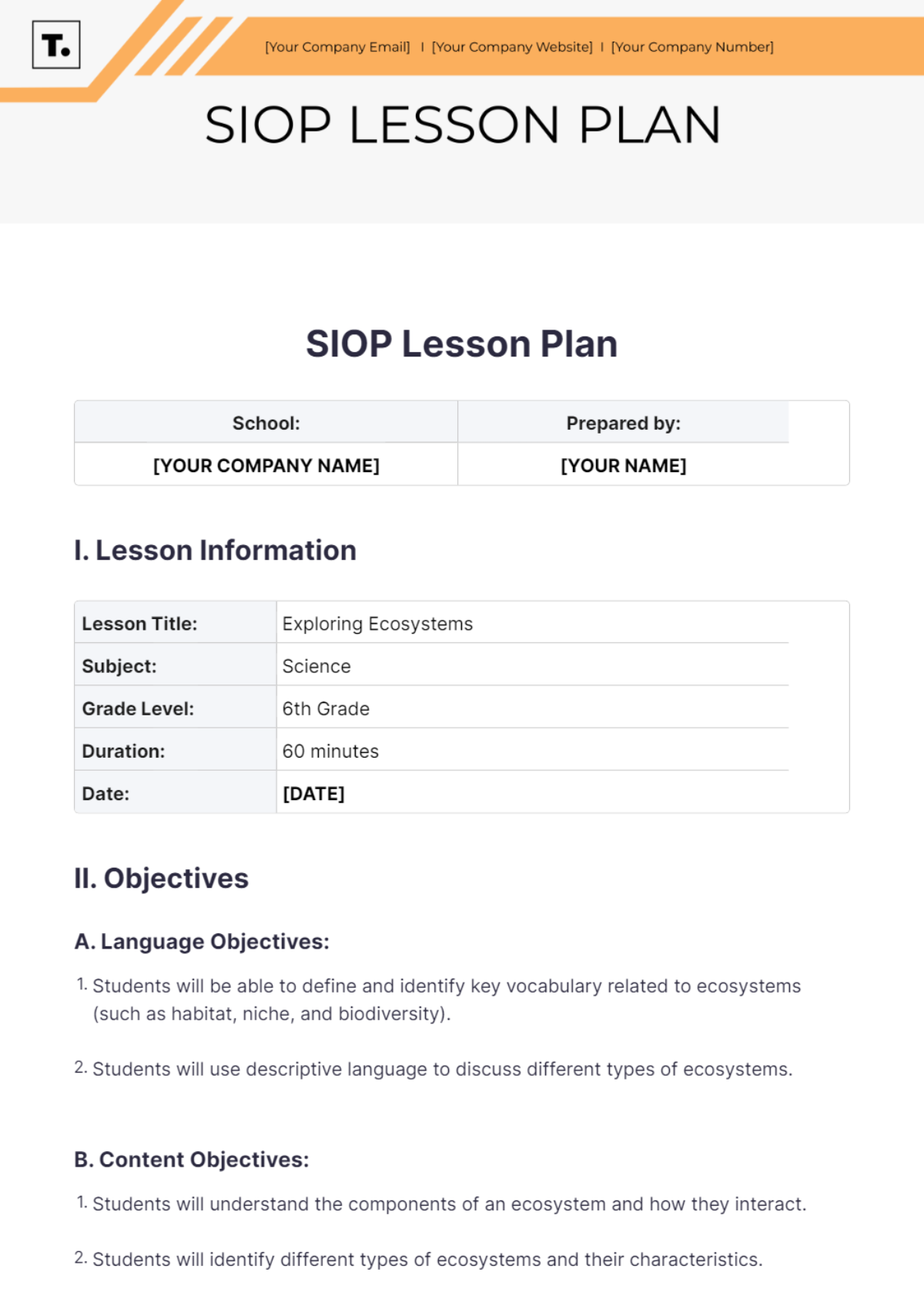High School ESL Lesson Plan
Instructor: [Your Name]
Email: [Your Email]
I. Lesson Overview
A. Lesson Title
Unraveling English Idioms
B. Duration
One 60-minute class period
C. Grade Level
High School ESL (9th-12th grade)
D. Subject
English as a Second Language
E. Objectives
Students will learn the meanings of common English idioms.
Students will practice using idioms in context through speaking and writing activities.
Students will create their own illustrations of idiomatic expressions.
II. Materials Needed
List of common English idioms
Whiteboard and markers
Handouts with idiomatic expressions
Art supplies (paper, markers, crayons)
Projector and screen (optional)
III. Instructional Flow
Stage | Activity | Time |
|---|---|---|
Introduction | Warm-up Activity: Display a few idiomatic expressions on the board and ask students to guess their meanings. | 10 minutes |
Discussion: Lead a class discussion on what idioms are and why they are important to learn in English. | 10 minutes | |
Learning Idioms | Presentation: Present a list of common English idioms along with their meanings and usage examples. | 15 minutes |
Interactive Activity: Engage students in a matching activity where they match idioms with their meanings. | 15 minutes | |
Using Idioms in Context | Role-Playing: Divide students into pairs and assign each pair a scenario. Have them create dialogues using idiomatic expressions relevant to the situation. | 20 minutes |
Writing Activity: Provide prompts for short stories or dialogues where students must incorporate idioms into their writing. | 20 minutes | |
Creating Idiom Illustrations | Art Activity: Give each student a different idiom and ask them to illustrate its literal meaning. | 15 minutes |
Gallery Walk: Display the illustrations around the classroom and have students guess the idiomatic meanings based on the drawings. | 15 minutes | |
Review and Wrap-Up | Discussion: Review key idioms learned during the lesson and ask students to share any challenges they encountered. | 10 minutes |
Exit Ticket: Have students write down one idiom they learned today and its meaning before leaving the classroom. | 5 minutes |
IV. Assessment
Participation in class activities and discussions (30%): Students will be assessed based on their active engagement and contribution to class discussions, role-plays, and group activities.
Accuracy of using idiomatic expressions in speaking and writing tasks (30%): Students' ability to correctly use idioms in context will be evaluated through speaking tasks, writing assignments, and role-plays.
Creativity and clarity of idiom illustrations (20%): Students' artwork will be assessed based on creativity, accuracy in representing the literal meaning of idioms, and clarity of communication.
Completion of exit ticket (20%): Students' completion of the exit ticket, which involves writing down an idiom learned during the lesson and its meaning, will provide insight into individual understanding and retention of idiomatic expressions.
V. Extension Activities
Extension activities provide opportunities for students to further explore and apply their understanding of idioms in diverse contexts. These extension activities include:
Creating a class book of idioms with illustrations and explanations: Students can collaboratively compile a collection of idioms, complete with their literal illustrations and explanations, to create a resource for future reference.
Watching videos or listening to songs containing idiomatic expressions and discussing their meanings: Students can analyze multimedia content to identify idioms in real-world contexts and deepen their understanding of idiomatic language.
Researching idioms from different cultures and comparing them to English idioms: Students can explore idiomatic expressions from various languages and cultures, highlighting similarities, differences, and cultural nuances.
VI. Reflection
The reflection section provides students with an opportunity to critically evaluate their learning experiences and identify areas for growth. Through self-reflection, students can develop metacognitive skills and deepen their understanding of the lesson content.
Individual Reflection: Students will take a few moments to reflect on their learning journey throughout the lesson. They may consider what they found most challenging, what strategies helped them understand idiomatic expressions better, and how they can apply their newfound knowledge in real-life situations.
Group Discussion: Students will engage in small group discussions to share their reflections with their peers. They will have the opportunity to learn from each other's experiences, gain new insights, and offer support and encouragement.
Teacher Feedback: The teacher will provide feedback and guidance based on students' reflections, offering praise for areas of strength and suggesting strategies for improvement. This feedback loop encourages ongoing growth and fosters a supportive learning environment.
